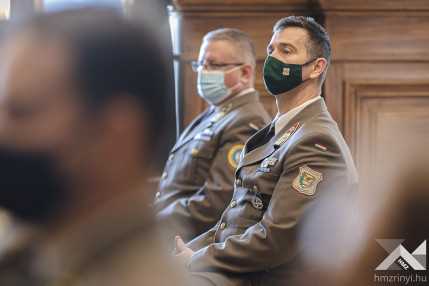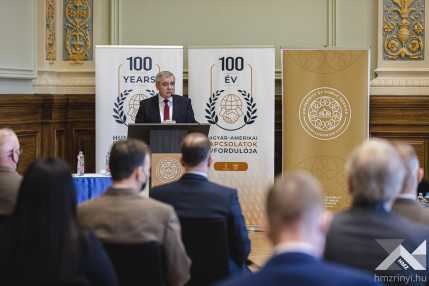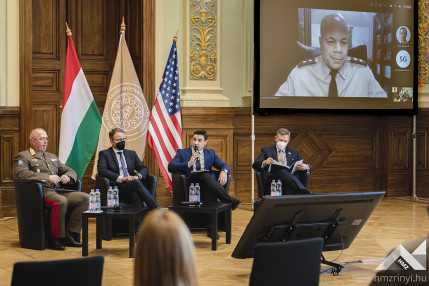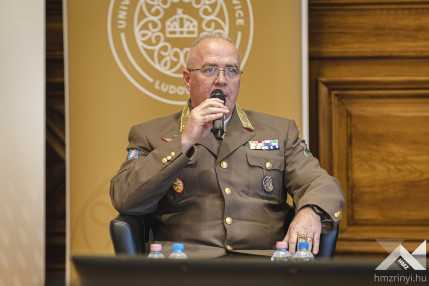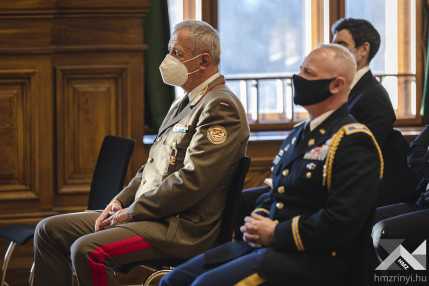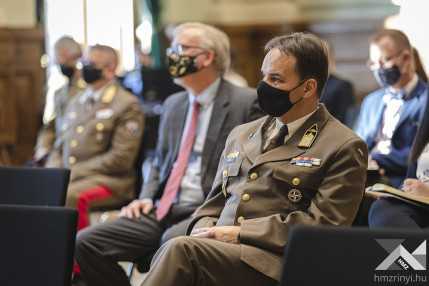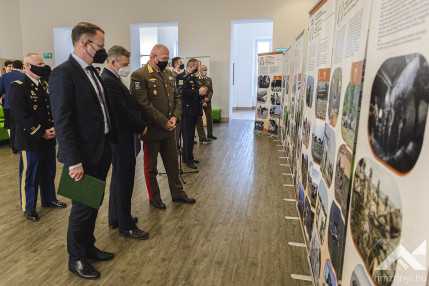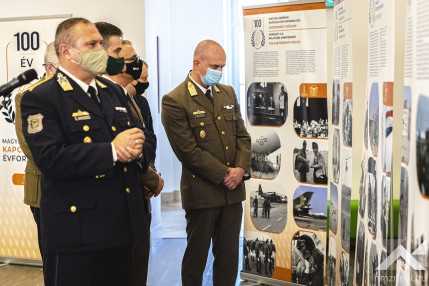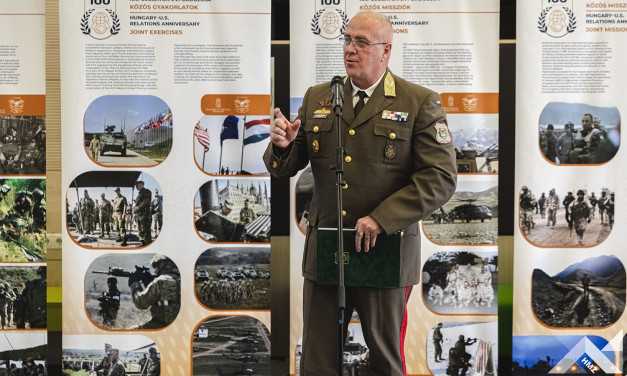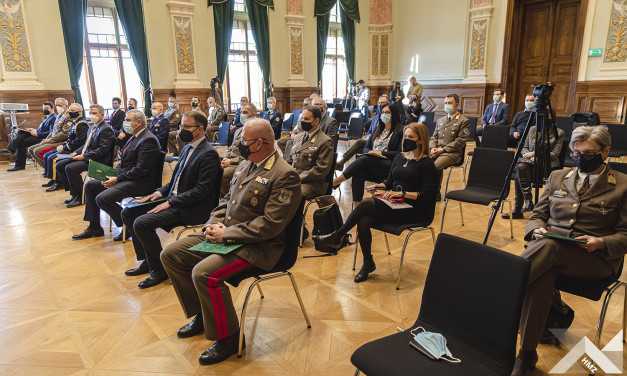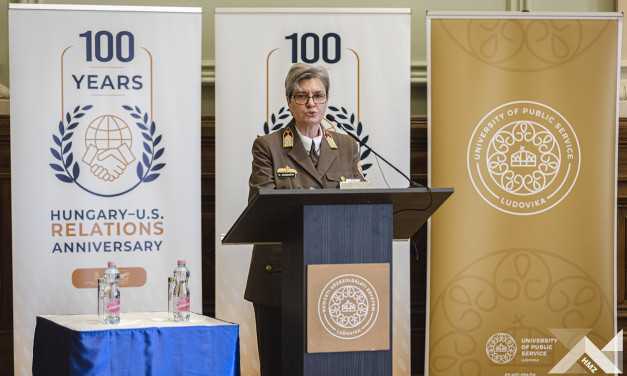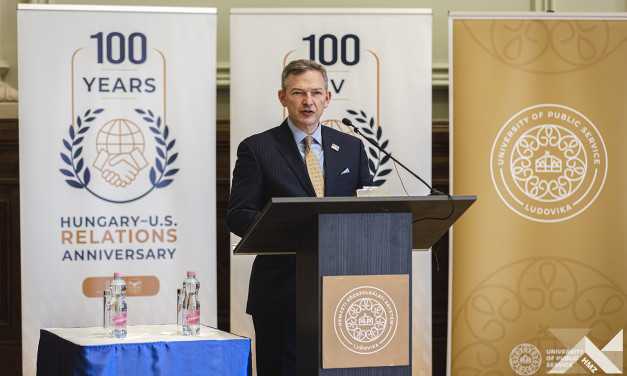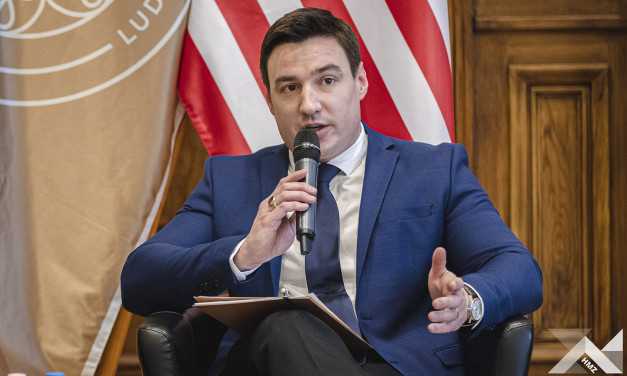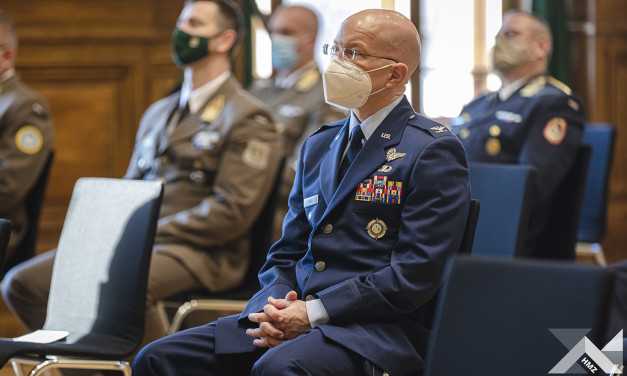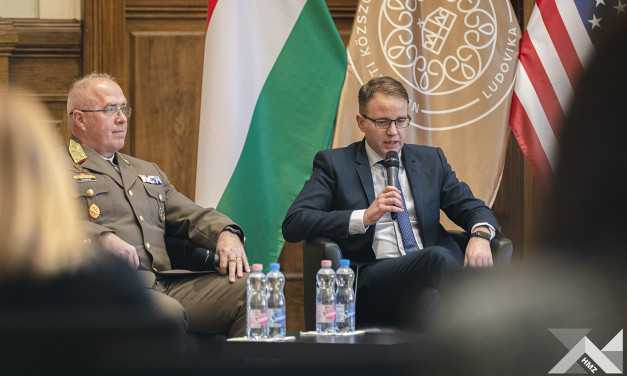Past, present and future in Hungary–U.S. relations
Text: Péter Snoj | Photo: Kinga Szováthy | 13:33 December 14, 2021On Monday, 13 December, lectures and a mutual exchange of ideas were organized on the occasion of the 100th anniversary of Hungary–U.S. diplomatic relations at the Ludovika Campus of the National University of Public Service, Budapest. State Secretary for Defence István Szabó delivered a welcome speech at the ceremonial event.

At the campus of the National University of Public Service in Ludovika Square, a commemorative event was held to mark the 100th anniversary of diplomatic relations between Hungary and the United States of America. Vice-Dean for International Affairs, National University of Public Service Faculty of Military Science and Officer Training Colonel Prof. Dr. Klára Siposné Kecskeméthy read out a letter of greeting from Brigadier General László Christián, the vice-rector of the university exercising rectorial powers. It was stated that the partnership of the United States of America is extremely important for Hungary, and the joint engagements in foreign missions further strengthen this alliance.
On behalf of the Ministry of Defence, State Secretary for Defence István Szabó emphasized in his speech that 2021 is an important year in the relations of our nations. Although our historical, political, economic and cultural ties go back much earlier, our diplomatic relations started developing exactly 100 years ago in 1921. Our military cooperation, however had to await the 1990s. After the 1989 change of regime, the United States of America gave the newly independent Hungarians enormous assistance in the interest of strengthening and modernization of our armed forces. The partnership that began in 1993 between the Hungarian Defence Forces and the Ohio National Guard is an excellent example of that. As early as six years later, Hungary joined NATO and officially became an ally of the United States of America. This moment has determined our defence relationship to the present day, whose common goal is to ensure security and regional stability.
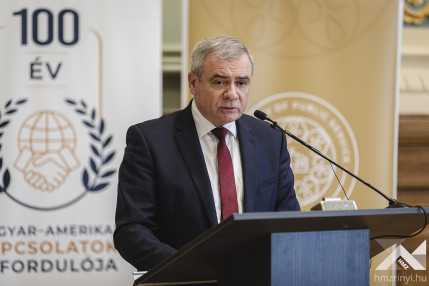
István Szabó added that our defence cooperation had changed a lot over the last three decades, taking the forms of, among others, mutual education and training programs, military exercises and the joint service of special operations forces. He said that these days, too, American and Hungarian soldiers are being co-deployed in foreign missions, for example in the Western Balkans, and they will continue to be allies of each other in the future as well.
Evoking the events of the past 100 years, Marc Dillard, Chargé d’Affaires, ad interim, U. S. Embassy in Budapest and Deputy State Secretary for Defence Policy Dr. Gergely Németh delivered professional lectures. Chargé d’Affaires, ad interim Dillard called the cooperation that developed between our countries exemplary. Although we are also allies in NATO, our nations have special historical ties such as the figure of Hussar Colonel Mihály Kováts Fabriczy, the “Founding Father of U.S. Cavalry”. He also noted that despite some fluctuations in the relations of the two countries in the past, the last three decades had been especially remarkable. Marc Dillard also spoke about the American–Hungarian joint military exercises and the Heavy Airlift Wing with the HDF Pápa Air Base as its Main Operating Base, as well as the engagements in foreign missions (Afghanistan and Iraq) where the troops of Hungary and the United States served shoulder to shoulder and even fought together if needed.

In his speech, he also mentioned the Baltic Air Policing (BAP) mission, in the framework of which the JAS 39 Gripen fighter aircraft of the Hungarian Defence Forces have already guarded the airspace of Baltic countries on two occasions. To exemplify Hungary’s commitment, Marc Dillard highlighted NATO’s KFOR mission, which currently has a Hungarian commander. Speaking about our defence relations, he said that together we are ready to deal with any security challenges the future might bring.
Deputy State Secretary Dr. Gergely Németh underlined that the undoubtedly most spectacular – and a highly important – point in the 100-year-long diplomatic relations between our nations is the transformation of the defence sphere and the Hungarian Defence Forces, and the United States of America has been a great supporter of this process. He recalled that back in 1988, Hungary conducted a military exercise as a member country of the Warsaw Pact, and ten years later we were already ready to join the NATO alliance. Speaking about the currently ongoing National Defence and Armed Forces Development Program, he pointed out that these developments strengthen not only Hungary but also NATO, and stated that today’s budget for defence spending is 1.59 per cent of the GDP, and by 2024 Hungary will have reached the NATO target of spending 2 per cent on defence. While listing the engagements in foreign missions where American and Hungarian troops are serving together, he mentioned Hungary’s service in Iraq, the peacekeeping activity in the Western Balkans and highlighted the KFOR mission protecting peace in Kosovo, which has a Hungarian commander for the first time in the person of Major General Ferenc Kajári. According to Gergely Németh, this opportunity, too, is a proof of the United States of America’s and NATO’s trust in Hungary.

Following the lectures, the professional exchange of ideas continued with a panel discussion, during which Chargé d’Affaires ad interim Marc Dillard, Deputy State Secretary Gergely Horváth, Major General Zsolt Sándor, Deputy Commander, Hungarian Defence Forces and (via a live video call) Major General John C. Harris, Adjutant General, Ohio National Guard assessed the defence cooperation of our countries and shared their thoughts about the challenges facing our alliance and the possibilities ahead of it.
After the conversation, Major General Zsolt Sándor opened the photo exhibition “Hungary–U. S. Defence Relations – Past, Present and Future”, which literally gives a picture of the common road that our nations have traveled in the past decades.
Galéria


